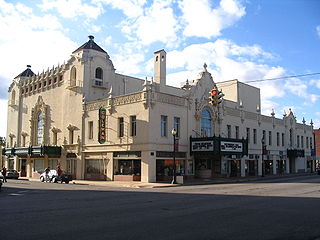Adventure.
A road trip with friends in search of anything, everything, or nothing at all.
We are born pioneers. Our curiosity has taken us across the globe, to the deepest oceans, to outer space.
The restless urge to transport ourselves from the mundane familiarity of daily life renders us blind to the attraction of our own hometown, and we are thus driven to venture off to experience life exotic.
Or at least, unfamiliar.
This behavior is an innate characteristic of the human condition.
Our migration is a never-ending story of epic treks of discovery. Accomplished explorers are deeply admired historic figures. The mere site of an old map produces vivid imagery of struggle and perseverance for the worthwhile purpose of life-threatening adventure.
Why?
Because sometimes, even when we are not looking for it, we stumble upon someplace incredible. We cannot explain its magic, but we know it when we see it.
In his book, American Gods, Neil Gaiman’s characters Wednesday and Shadow are discussing the House on the Rock when Shadow asks why the location is important to their journey.
 “This is a roadside attraction,” said Wednesday. “One of the finest. Which means it is a place of power.”
“This is a roadside attraction,” said Wednesday. “One of the finest. Which means it is a place of power.”
“Come again?”
“It’s perfectly simple,” said Wednesday. “In other countries, over the years, people recognized the places of power. Sometimes it would be a natural formation, sometimes it would just be a place that was, somehow, special. They knew that something important was happening there, that there was some focusing point, some channel, some window to the Immanent. And so they would build temples or cathedrals, or erect stone circles, or…well, you get the idea.”
If Wednesday’s claim is true, says Shadow, then Disney World would be one of the holiest places on Earth. Wednesday discounts the notion and explains how Disney World is just a copy—it is not genuine—but, “I think there might be something real in the original Disneyland.”
One does not have to believe in the supernatural to agree.
Here in the United States there are locations where some entrepreneur or weary traveler stopped for the night, felt the hint of something special—maybe nothing more than a beautiful view—and visualized a monument that would bring generations of people to witness the magic firsthand.
Today, those attractions are prized possessions of the country—a catalyst of patriotism and humanity in its sincerest form. Mount Rushmore. The World’s Largest Ball of Twine. The Grand Canyon. Yosemite. Mall of America. Time Square. Niagara Falls. Carhenge.
Those of us fortunate enough to visit these magical locations may experience the added bonus of a scenic drive on the primary conveyor of national treasures in the United States, Route 66.
For example, as you enter Miami, Oklahoma on 66, the skyline reveals an architectural anachronism—the entablature of the Spanish Mission Revival-style design of the historic Coleman Theatre.

Built in 1929, the Coleman Theatre is one of the oldest “premiere” vaudeville movie houses still in operation. It is recorded in the National Register of Historic Places, and it is a magical attraction of immeasurable power.
Its vintage projector, accompanied by the “Mighty Wurlitzer,” continues to flicker a buffet of silent films to nostalgic fans. Years ago, when the theatre was modernized, the stage was lengthened, providing the ability to deliver large-scale, live theatrical events.
The Coleman has survived depressions, recessions, municipal growth, the invention of “talkies,” and the decline of live theatre, which the Coleman has helped restore. Duty-bound citizens—heroes—aware of the Coleman’s significance preserved its charm nearly lost to condemnation and demolition.

Beyond the stucco Spanish façade and through the box office doors, erupts French inspired Louis Quinze grandeur. Peculiar for this part of the world, yet here it is. Splendor unforgiving.
Just as Walt Disney was drawn to southern California for its wealthy investors, George L. Coleman, Sr. was captivated by northeastern Oklahoma for its rich deposits of zinc and lead. He mined massive profits and used his fortune to fund a community hospital, school, and his namesake legacy.
If you are local to this majestic landmark, volunteer with the Coleman Theatre or audition for a Miami Little Theatre production. The reward is invigorating.
Otherwise, open your mind to the call of the road. Pack up the car and drive. Part the yellow and white lines and let them usher you to a signature red seat of the Coleman Theatre Beautiful.
Watch a group of strangers transform into familiar characters.
I recently found myself alone in the dark in the Coleman Theatre. After a long day pre-show, I sat with a flashlight and wrapped a wire sling with gaff tape to better hide the lift line for a MLT production of The Wizard of Oz.
There in the quiet, the magic enveloped me. I breathed the air of generations of Coleman Theatre guests: from those craftsman who risked their lives to build it, to the legendary performers, such as Will Rogers and the Marx Brothers, who contributed to the provenance.
I became part of the magic.
A sentence of the story.
Energized by this great attraction of immeasurable power.
I loved growing up with the Coleman Theater in the early 1960s – b&w classics, balconies which were roped off because they were crumbling – long before Big G (J. Graham) led the renovation. Later playing the campy “romantic lead” of Jonathan Harker in a very camped up production of the original Dracula, where and when I proposed to my college sweetheart.
It was magic then; it’s magic now. Thanks for t’e memories.
That’s wonderful! Thanks for sharing.